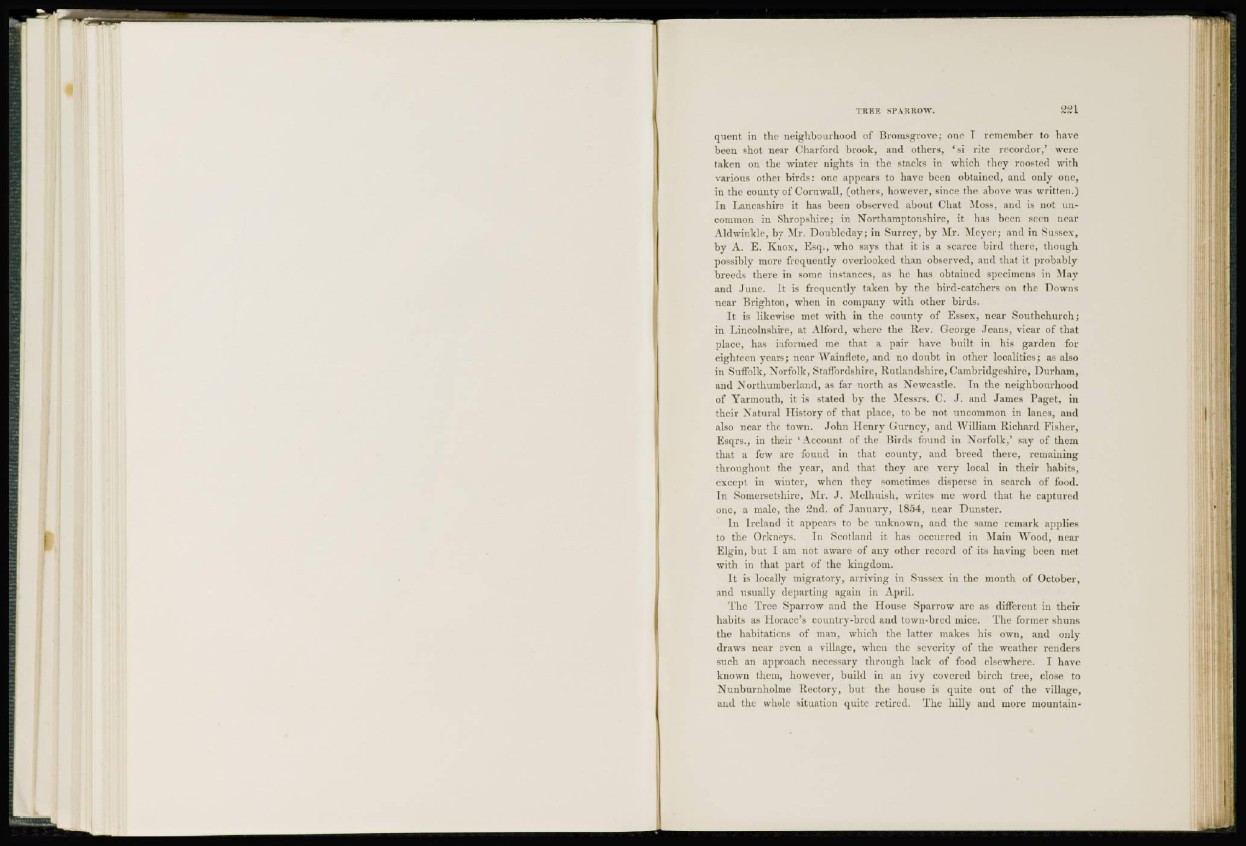
quent in the neighbourhood of Bromsgrove; one T remember to have
been shot near Charford brook, and others, 'si rite recordor,' were
taken on the winter nights in the stacks in which they roosted with
various other birds: one appears to have been obtained, and only one,
in the county of Cornwall, (others, however, since the above was written.)
Tn Lancashire it has been observed about Chat Moss, and is not uncommon
in Shropshire; in Northamptonshire, it has been seen near
Aldwinkle, by Mr. Doubleday; in Surrey, by Mr. Meyer; and in Sussex,
by A. E. Knox, Esq., who says that it is a scarce bird there, though
possibly more frequently overlooked than observed, and that it probably
breeds there in some instances, as he has obtained specimens in May
and June. It is frequently taken by the bird-catchers on the Downs
near Brighton, when in company with other birds.
It is likewise met with in the county of Essex, near Soufhcliurch;
in Lincolnshire, at Alford, where the Rev. George Jeans, vicar of that
place, has informed me that a pair have built in his garden for
eighteen years; near Wainflete, and no doubt in other localities; as also
in Suffolk, Norfolk, Staffordshire, Rutlandshire, Cambridgeshire, Durham,
and Northumberland, as far north as Newcastle. In the neighbourhood
of Yarmouth, it is stated by the Messrs. C. J. and James Paget, in
their Natural History of that place, to be not uncommon in lanes, and
also near the town. John Henry Gurney, and William Richard Fisher,
Esqrs., in their 'Account of the Birds found in Norfolk,' say of them
that a few are found in that county, and breed there, remaining
throughout the year, and that they are very local in their habits,
except in winter, when they sometimes disperse in search of food.
In Somersetshire, Mr. .J. Melhuish, writes me word that he captured
one, a male, the 2nd. of January, 18o4, near Dunster.
In Ireland it appears to be unknown, and the same remark applies
to the Orkneys. In Scotland it has occurred in Main Wood, near
Elgin, but I am not aware of any other record of its having been met
with in that part of the kingdom.
It is locally migratory, arriving in Sussex in the month of October,
and usually departing again in April.
The Tree Sparrow and the House Sparrow are as different in their
habits as Horace's country-bred and town-bred mice. The former shuns
the habitations of man, which the latter makes his own, and only
draws near even a village, when the severity of the weather renders
such an approach necessary through lack of food elsewhere. I have
known thein, however, build in an ivy covered birch tree, close to
Nunburnholme Rectory^, but the house is quite out of the village,
and the whole situation quite retired. The hilly and more mountain